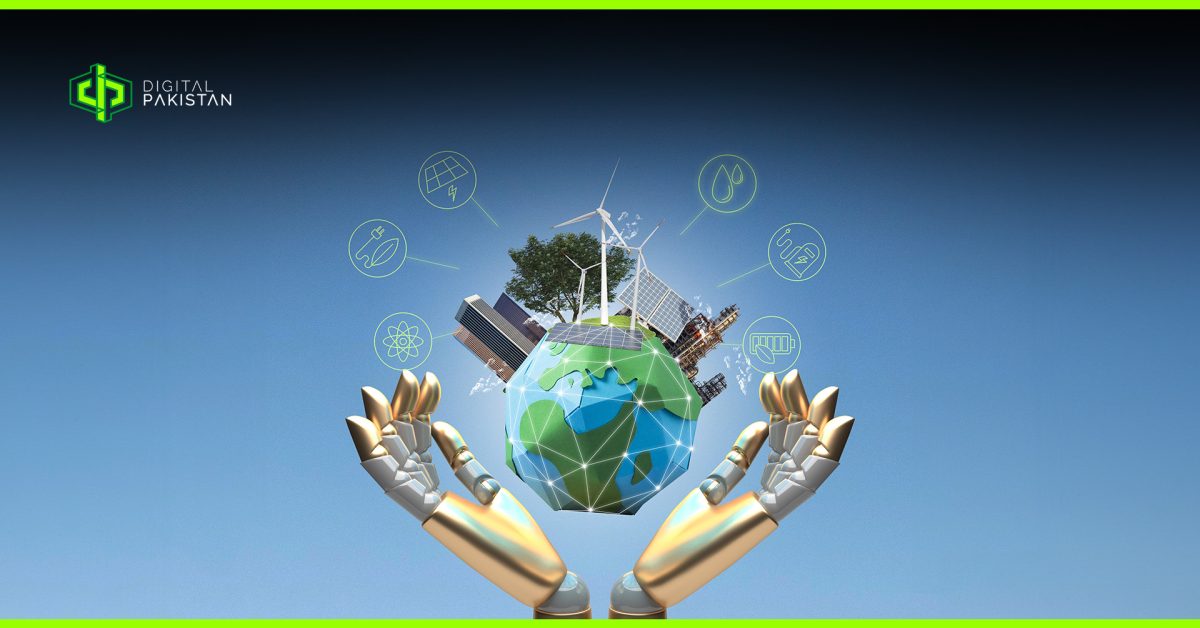
Bytes of Flavor: How Tech Spices Up Pakistani Cuisine for the Modern Palate
February 15, 2024
Last Week in Science 12th to 18th February
February 25, 2024The Balancing Act: Tech Evolution and Climate Change
“Save the Earth!”
“No Planet B!”
And so on. The placards at climate action rallies are numerous, and honestly, I do find them inspiring too. However, they don’t exactly outline how to save the earth — kind of an important point, in my opinion! Sure, we can switch to paper straws, and try to use public transport more often, but that will only get us so far. The real answer, once again, lies in the utilization of technology.
Imagine a world where every carbon footprint is precisely tracked and analyzed — thanks to artificial intelligence, drones, Earth observation satellites, and advanced computing systems, this vision is well on its way to becoming a reality! One such example is the implementation of smart grids that ensure the efficient use of renewable resources such as solar and wind power. These grids can monitor energy consumption and production in real time, allowing for optimal use of resources and minimal waste.
Another way technology helps us reduce our carbon footprint is through the use of electric vehicles. These vehicles are powered by electricity, which is a much cleaner alternative to fossil fuels. Not only do they emit less pollution, but they also reduce our dependence on oil and other non-renewable resources.
However, tech advancements come with their own set of unique challenges and risks. One of the primary obstacles to the widespread adoption of advanced technologies is the high cost of implementation, which can create significant barriers for many individuals and organizations. Furthermore, there is often unequal access to technology, which can exacerbate existing disparities and leave marginalized communities behind.
Also, non-fungible tokens (NFTs) are becoming more popular in the digital world. But, there’s a problem. Creating, verifying, and trading NFTs takes a lot of energy. This is because they are stored on blockchain networks. The amount of energy used to create NFTs is causing harm to the environment. The use of high-performance computers and graphics cards to engage with NFTs is also contributing to electronic waste.
This electronic waste is causing problems for the proper disposal and recycling of outdated devices, which often end up in landfills. This can release harmful substances into the environment. Although NFTs are an exciting new way of owning digital assets and expressing creativity, it might be high time for the world to take a step back and look at the bigger picture.
Despite these challenges, technology remains a beacon of hope: it offers pathways to adaptation and mitigation, from resilient infrastructure to nature-based solutions. Early warning systems and climate-resilient agricultural practices enhance the resilience of vulnerable communities, while innovations in water management address the growing threat of water scarcity. Likewise, it is tech that has gifted us with the capability to successfully utilize our renewable resources, and in my humble opinion, we need to appreciate it more through grand-scale implementations where feasible. But maybe that’s just me.
At the end of the day, it’s a dichotomy as old as time itself: the push and pull between progress and preservation, innovation and conservation. And in the delicate dance between renewable energy and digital sustainability, we find ourselves grappling with questions of balance, responsibility, and the collective stewardship of our planet. It is time for us, and our policymakers to ask ourselves, do we have our priorities straight? Or do we need to care just a little bit more about the ever-looming threat of gradual mass extinction?
About the Author: With chai and Google Docs as trusted companions, Abrish Nayyar has honed the art of weaving stories, fueled by late-night inspiration and the mundane world. Aspiring to one day be a published author, to her, every article is an inch closer to that goal.






